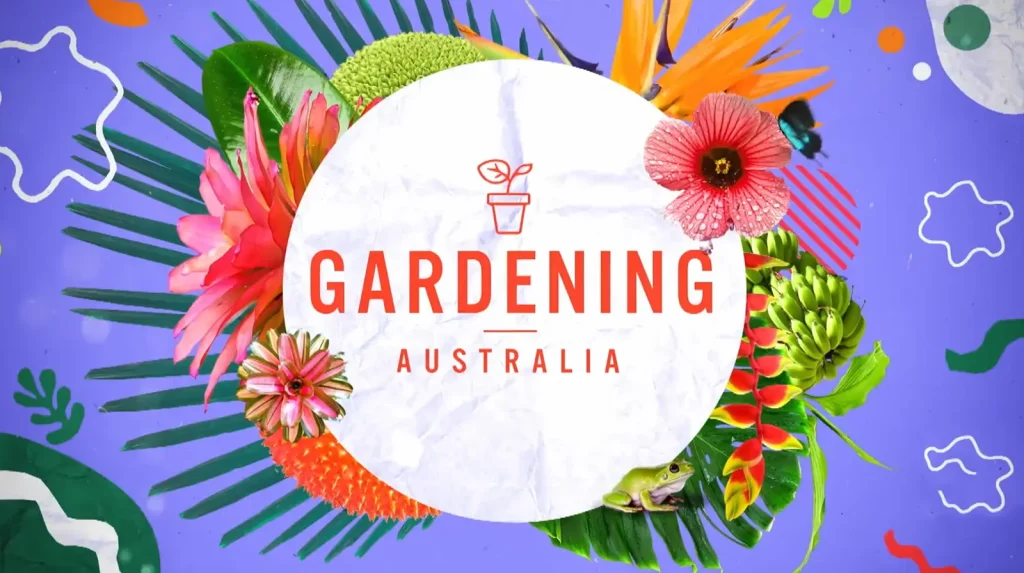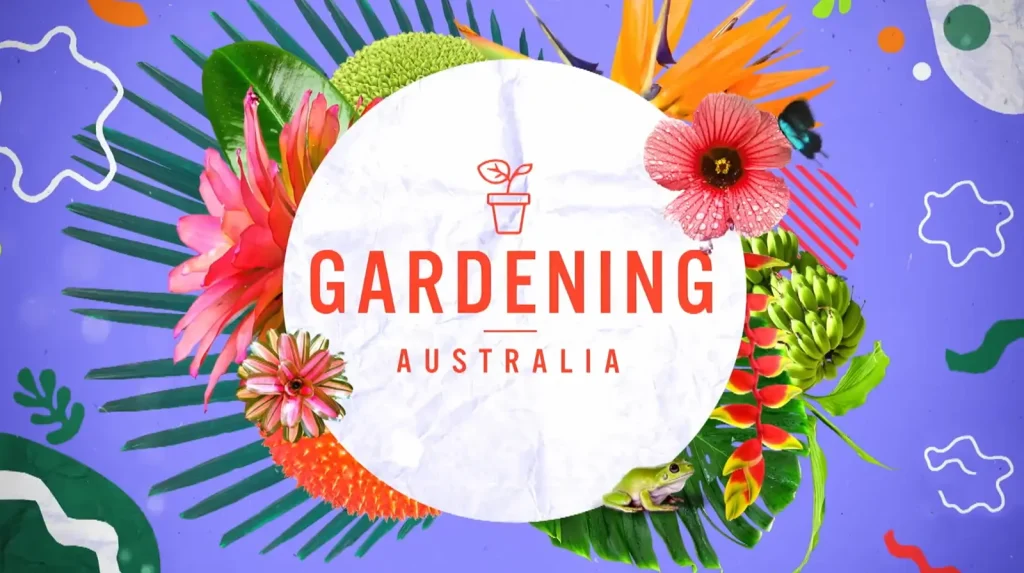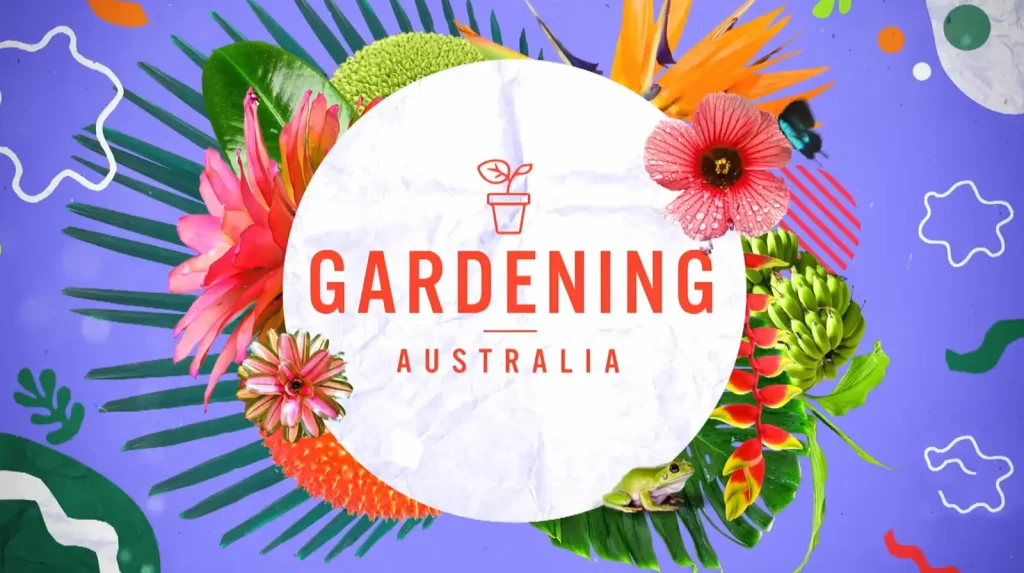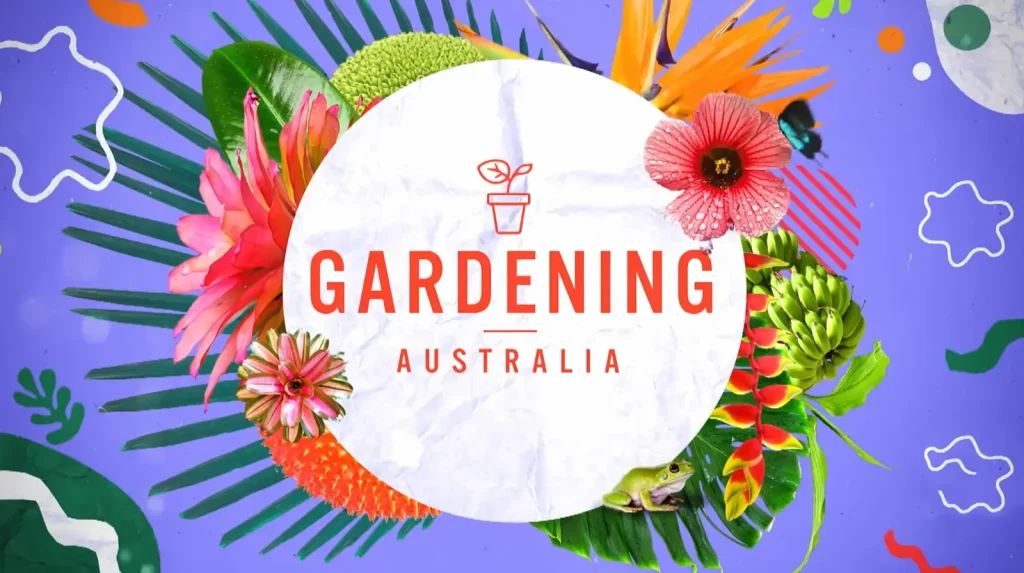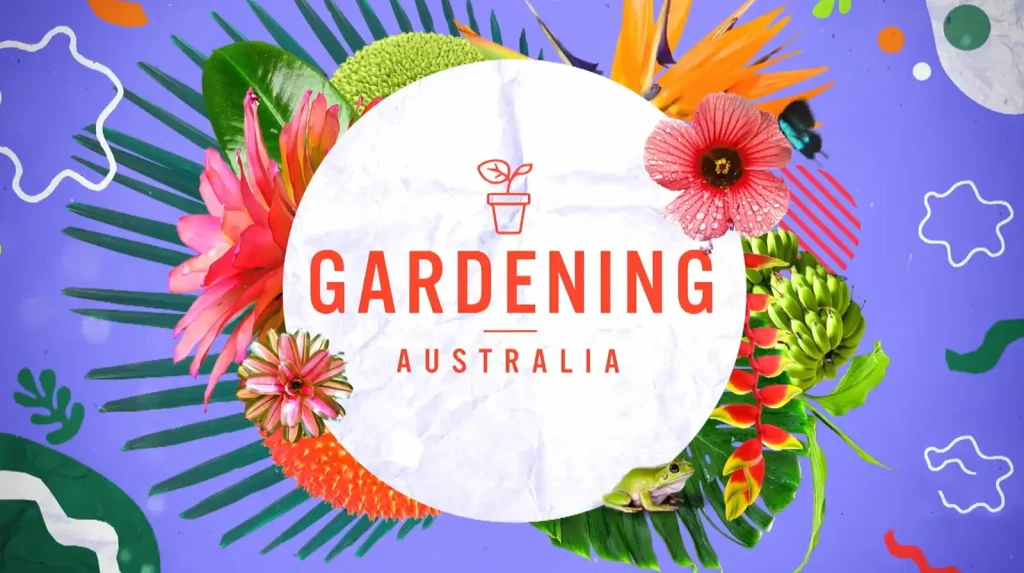Gardening Australia 2024 episode 19: In this episode of Gardening Australia, Millie and Tammy have the pleasure of meeting with some of the country’s most talented and award-winning garden designers. Their journey takes them through a variety of stunning landscapes, each offering inspiration and insights into creating beautiful outdoor spaces. They share tips and techniques that can help anyone, from seasoned gardeners to novices, enhance their gardens’ aesthetic and functional appeal.
Meanwhile, Hannah takes on the task of replacing apricot trees in her orchard. She explains the process of selecting the right variety, preparing the soil, and ensuring the new trees are planted correctly to thrive. Hannah’s expertise shines through as she provides practical advice on how to care for young fruit trees, emphasizing the importance of proper watering, fertilization, and pest control.
Costa, always brimming with creativity, turns his attention to crafting a delightful strawberry hamper. He demonstrates how to choose the best strawberry plants and arrange them in a decorative and functional manner. Costa’s project is perfect for those who love fresh strawberries and want to enjoy them right from their own garden. He also shares tips on maintaining the plants to ensure a bountiful harvest.
Josh dives into the world of unusual alliums, a group of plants known for their striking flowers and versatility in the garden. He explores different species and cultivars, highlighting their unique characteristics and growth requirements. Josh’s enthusiasm is contagious as he explains how these alliums can add a touch of the extraordinary to any garden setting.
Jane, on the other hand, showcases a selection of compact shrubs that are ideal for small spaces or as accent plants in larger gardens. She discusses the benefits of these shrubs, such as their low maintenance needs and year-round appeal. Jane’s segment is a must-watch for anyone looking to maximize their garden’s potential without compromising on beauty or functionality.
Gardening Australia 2024 episode 19
Additionally, we meet a couple whose garden is a true testament to their dedication and hard work. Their bountiful garden is filled with an array of fruits, vegetables, and flowers, demonstrating what can be achieved with passion and perseverance. Their story is sure to inspire viewers to start their own gardening projects or take their existing gardens to the next level.
Episode 19 of Gardening Australia 2024, titled “Winter: Designer Gardens & Strawberry Baskets,” is packed with valuable insights and practical advice for gardeners of all levels. Whether you’re interested in innovative garden designs, fruit tree care, creative planting ideas, or simply seeking inspiration from fellow gardening enthusiasts, this episode has something for everyone.
Join the team as they explore the beauty and diversity of winter gardens, offering tips and techniques to help you make the most of this season. From designing award-winning landscapes to enjoying home-grown strawberries, there’s plenty to learn and enjoy in this engaging and informative episode.
Chapter 1. Introduction
Overview of Gardening Trends and Innovations
Gardening is no longer confined to sprawling backyards or expansive estates. Today’s gardening trends reflect a shift towards sustainability, creativity, and adaptability. With urban spaces shrinking, gardeners are becoming more innovative, finding ways to integrate green spaces into their lives, no matter the size of their living area. From vertical gardens gracing apartment balconies to compact designer gardens in urban homes, the face of gardening is evolving.
The move towards sustainable gardening practices is also gaining momentum. Gardeners are increasingly aware of their environmental footprint, opting for eco-friendly solutions. This includes using recycled materials for garden projects, choosing native plants to support local ecosystems, and employing organic methods to manage pests and diseases. These trends not only enhance the beauty and functionality of gardens but also contribute positively to the environment.
Importance of Sustainable Gardening Practices
Sustainable gardening is more than just a trend; it’s a necessary approach to ensure the health of our planet. By adopting sustainable practices, gardeners can reduce waste, conserve water, and create habitats for wildlife. This method encourages a symbiotic relationship between humans and nature, where gardens become sanctuaries for both people and animals.
One key aspect of sustainable gardening is water conservation. Techniques such as mulching, using drought-tolerant plants, and installing rainwater harvesting systems help in reducing water usage. Additionally, composting kitchen scraps and garden waste not only enriches the soil but also reduces landfill contributions. These practices, while seemingly small, collectively make a significant impact on the environment.
Preview of Key Topics: Designer Gardens, Vertical Gardening, and Plant Care Tips
The world of gardening offers endless possibilities, and this article aims to delve into some of the most exciting aspects. We’ll explore the realm of designer gardens, where aesthetics meet functionality, creating spaces that are not only beautiful but also practical. You’ll discover how leading garden designers incorporate native plants, recycled materials, and innovative layouts to craft breathtaking landscapes.
Next, we’ll venture into the vertical gardening revolution. This technique is perfect for those with limited ground space but a desire to grow their own plants. Whether it’s a simple DIY project using household items or a sophisticated green wall system, vertical gardening offers solutions for every skill level and budget. It’s an excellent way to maximize space and bring greenery into urban environments.
Finally, we will provide essential plant care tips tailored for every season. From tackling common plant diseases to ensuring your indoor plants thrive during winter, these practical insights will help you maintain a healthy, vibrant garden year-round. By following these tips, you’ll become a more confident gardener, equipped to handle the challenges that come with each season.
Gardening is a journey of continuous learning and discovery. Whether you’re a seasoned gardener or just starting, there’s always something new to learn and explore. So, let’s dig in and cultivate our passion for gardening, nurturing not only our plants but also our connection to nature.
Chapter 2. Designer Gardens: Innovations and Inspirations
The Melbourne International Flower and Garden Show
Imagine strolling through a sea of vibrant blooms, each garden more captivating than the last. The Melbourne International Flower and Garden Show (MIFGS) offers just that—a sensory feast for garden enthusiasts and novices alike. Every year, over five days, this renowned event draws thousands of visitors eager to explore the latest in garden design, plant varieties, and sustainable practices.
As you walk through the show, you encounter awe-inspiring installations from some of the world’s best florists, gardeners, and landscapers. Each display tells a unique story, blending aesthetics with functionality. From exotic floral arrangements to eco-friendly garden designs, MIFGS showcases the creativity and innovation driving modern gardening trends. This event is not just a display of beauty but a hub for exchanging ideas and inspirations that can transform any garden space.
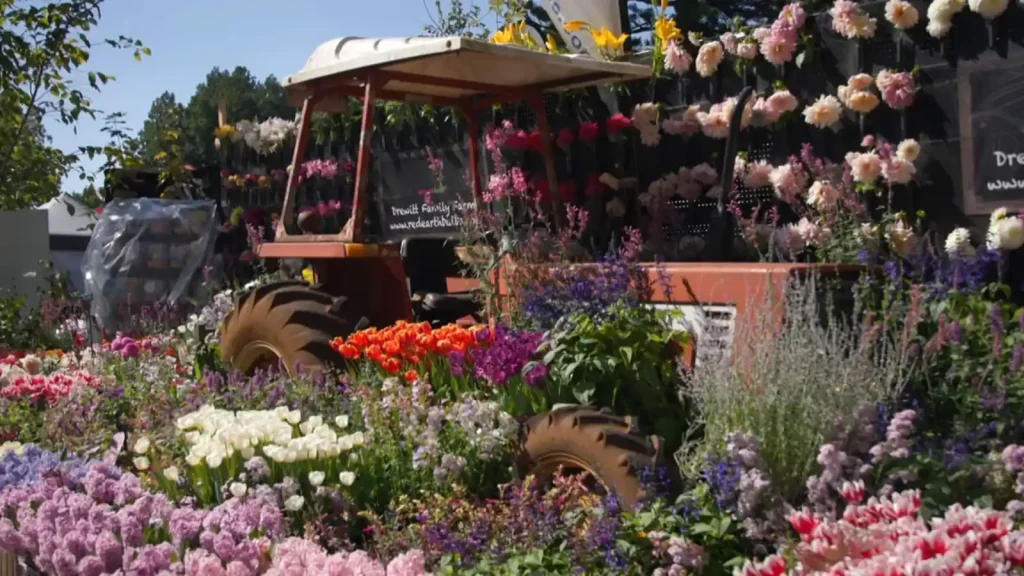
Gold Medal Gardens: Case Studies and Design Insights
SaltBush Garden: A Journey Through Victorian Flora
The SaltBush garden, designed by Fiona Brockhoff and Phillip Withers, is a masterpiece that celebrates the unique flora of Victoria. This gold-medal-winning garden takes visitors on a journey from the salty coastal dunes to the lush, diverse bushland. Each section of the garden features plants native to Victoria, showcasing their beauty and resilience.
One of the highlights of the SaltBush garden is the use of Atriplex cinerea, commonly known as coastal saltbush. This plant thrives in harsh coastal conditions, offering a striking silver hue that contrasts beautifully with the surrounding greenery. The garden also features Banksia integrifolia, which attracts pollinators with its distinctive cones and silvery leaves. These plants not only add visual interest but also support local biodiversity, emphasizing the garden’s eco-friendly design.
New Nordic Notes, another standout at MIFGS, brings a touch of Scandinavian charm to Melbourne. Designed by Kajsa and Annika, this garden captures the essence of Nordic landscapes, complete with birch trees, ferns, and wild strawberries. The designers drew inspiration from their Swedish heritage, creating a tranquil space that feels both familiar and exotic.
The garden’s centerpiece is a series of wooden platforms, inviting visitors to sit, relax, and immerse themselves in nature. This design reflects the Swedish concept of ‘smultronställe,’ a personal sanctuary free from stress. The garden also incorporates traditional Nordic motifs, such as plywood weaving and wooden heart shapes, adding a touch of rustic elegance. This blend of cultural elements and natural beauty creates a serene escape within the bustling garden show.
Notable Designers and Their Philosophies
Fiona Brockhoff and Phillip Withers
Fiona Brockhoff and Phillip Withers are celebrated for their innovative approach to garden design. Their philosophy revolves around creating gardens that are not only beautiful but also sustainable and functional. By using native plants and recycled materials, they craft spaces that harmonize with the natural environment. Their work on the SaltBush garden is a testament to their commitment to ecological balance and biodiversity.
Brockhoff and Withers believe in designing gardens that tell a story. Each plant and element is carefully selected to contribute to the overall narrative. This approach ensures that their gardens are not just visually appealing but also rich in meaning and context. Their designs encourage visitors to connect with nature, fostering a deeper appreciation for the environment.
Koji Ninomiya and Emmaline Bowman
Koji Ninomiya and Emmaline Bowman bring a unique perspective to garden design, blending traditional and contemporary elements. Ninomiya, a veteran of the international garden circuit, emphasizes harmony between humans and nature. His designs often feature elements of Japanese gardens, such as water features and minimalist landscapes, combined with the lush, colorful style of English gardens.
Bowman, on the other hand, focuses on using local plants to create sustainable and beautiful spaces. Her award-winning garden, Through the Looking Glass, highlights the importance of concealed ecosystems. By showcasing the intricate networks of roots and fungi beneath the soil, Bowman educates visitors about the vital role these unseen elements play in a healthy garden. Together, Ninomiya and Bowman demonstrate that thoughtful design can create gardens that are both stunning and sustainable.
Chapter 3. Vertical Gardening and Small Space Solutions
The Rise of Vertical Gardens: Benefits and Challenges
In the heart of urban jungles, where space is a luxury, vertical gardens rise like green beacons of hope. Imagine transforming a bare wall into a lush, thriving garden—a vertical oasis that breathes life into your home. This innovative gardening technique offers numerous benefits, making it a popular choice among city dwellers and gardening enthusiasts alike.
Vertical gardens maximize space, allowing you to grow a variety of plants even in the smallest areas. Whether it’s a balcony, patio, or a sunny indoor wall, these gardens create a green haven where you can grow herbs, vegetables, and ornamental plants. Moreover, they improve air quality by absorbing pollutants and producing oxygen, creating a healthier environment. Vertical gardens also provide insulation, helping to regulate indoor temperatures and reduce energy costs.
However, vertical gardening comes with its own set of challenges. Ensuring adequate water and nutrient supply is crucial, as gravity can quickly drain resources away from the roots. Additionally, the choice of plants is vital; not all plants thrive in vertical setups. Selecting drought-tolerant and lightweight plants can mitigate some of these challenges. Despite these hurdles, the rewards of a vertical garden far outweigh the difficulties, offering a sustainable and visually appealing solution to urban gardening.
Practical Vertical Gardening Projects
Strawberries in a Laundry Basket
Turning an old laundry basket into a strawberry planter is a delightful and eco-friendly project. Start by selecting a sturdy laundry basket, preferably one with good depth. Line the basket with hessian or burlap to hold the soil in place. This step is crucial to ensure that the soil doesn’t spill out through the basket’s holes. Next, fill the basket with a rich, well-draining potting mix, enriched with compost for added nutrients.
Now comes the fun part—planting the strawberries. Make small holes in the hessian and gently insert the strawberry plants, ensuring they are spaced evenly around the basket. This method allows the plants to grow outward, maximizing the planting area. Water the plants thoroughly and place the basket in a sunny spot. The beauty of this setup is that it utilizes vertical space effectively, providing ample room for the strawberries to thrive. Plus, the elevated height makes harvesting a breeze.
This DIY project not only repurposes household items but also brings the joy of fresh strawberries to your home. It’s a perfect example of how vertical gardening can be both functional and creative, turning everyday objects into productive garden spaces.
DIY Vertical Planters Using Repurposed Materials
Creating vertical planters from repurposed materials is a fantastic way to combine sustainability with gardening. Start by gathering items such as old wooden pallets, PVC pipes, or even shoe organizers. These materials can be transformed into stylish and practical vertical gardens. For instance, a wooden pallet can be turned into a vertical herb garden. Simply secure the pallet to a wall, fill the gaps with soil, and plant your favorite herbs.
PVC pipes offer another versatile option. Cut the pipes into sections, drill holes for drainage, and mount them horizontally or vertically on a sturdy frame. Fill the pipes with soil and plant a variety of herbs, flowers, or small vegetables. This setup not only saves space but also adds an interesting architectural element to your garden.
Using repurposed materials not only reduces waste but also adds a unique, personal touch to your garden. It’s a wonderful way to experiment with different plants and layouts, making gardening accessible and enjoyable for everyone, regardless of space constraints.
Choosing Plants for Vertical Gardens
Best Plants for Small Spaces
When it comes to vertical gardening, choosing the right plants is key to success. Opt for plants that are naturally suited to growing in confined spaces and can thrive with minimal soil. Herbs like basil, thyme, and oregano are excellent choices, as they require little maintenance and provide fresh flavors for your kitchen. Leafy greens such as lettuce, spinach, and kale also do well, offering nutritious additions to your meals.
Flowering plants like petunias and marigolds add a splash of color and attract beneficial pollinators. For a more exotic touch, consider plants like succulents and air plants, which are perfect for vertical setups due to their low water needs and unique appearances. The beauty of these plants lies in their versatility and resilience, making them ideal candidates for vertical gardens.
Combining Edibles and Ornamentals
A well-planned vertical garden can be both beautiful and bountiful by combining edible and ornamental plants. Mixing vegetables like cherry tomatoes and peppers with flowering plants creates a visually appealing and productive garden. Vining plants like beans and peas can climb trellises, adding height and texture to your garden while providing fresh produce.
Incorporate cascading plants such as nasturtiums or sweet potato vines, which spill over the edges of containers, softening the lines and adding a lush, full look. These plants not only enhance the aesthetic appeal but also support the ecosystem by attracting pollinators and beneficial insects. By thoughtfully selecting and combining plants, you can create a harmonious and thriving vertical garden that serves both practical and decorative purposes.
Chapter 4. Plant Care Tips for Every Season
Seasonal Plant Care: What to Do and When
Winter Care for Indoor and Outdoor Plants
As the cold grip of winter sets in, your plants need extra care to survive and thrive. Indoor plants, especially those from tropical origins, can struggle with the reduced light and dry air from heating systems. To help them, place plants near windows where they can soak up the maximum sunlight available. Consider using grow lights to supplement natural light, ensuring your plants get at least eight hours of light daily.
Humidity is another critical factor. Indoor heating can make the air quite dry, which is unfavorable for most houseplants. Placing a humidifier nearby or grouping plants together can help maintain adequate humidity levels. For outdoor plants, particularly those that are not frost-tolerant, mulching is essential. A thick layer of mulch acts as a blanket, protecting the roots from freezing temperatures. Watering should be reduced, but don’t let the soil dry out completely, as plants still need moisture to stay healthy during their dormancy.
Summer Plant Maintenance
Summer, with its longer days and warmer temperatures, is a time of rapid growth and vibrant blooms. However, the intense heat can also stress plants. Watering becomes crucial; aim to water early in the morning or late in the evening to minimize evaporation and ensure the water reaches the roots. Mulching is beneficial in summer as well, helping to retain soil moisture and keep roots cool.
Pruning during the summer months encourages healthy growth and keeps plants looking their best. Remove spent blooms to promote new flowers and trim back overgrown branches to maintain shape. Fertilization should also be stepped up, as plants consume more nutrients during their peak growing season. Use a balanced, slow-release fertilizer to provide a steady supply of essential nutrients. Keep an eye out for pests, as they are more active in warm weather, and address any infestations promptly to prevent damage.
Managing Common Plant Diseases and Pests
Identifying and Treating Fungal Diseases
Fungal diseases can be the bane of a gardener’s existence, often appearing as unsightly spots, mildew, or blight. The first step in managing these diseases is early identification. Regularly inspect your plants for any unusual changes, such as discoloration or wilting. When you spot a problem, act quickly to contain the spread. Removing affected leaves or branches can prevent the fungus from spreading to healthy parts of the plant.
Organic fungicides, such as neem oil or copper-based products, are effective treatments that minimize harm to the environment. Ensuring good air circulation around plants can also reduce the risk of fungal infections. Spacing plants properly and pruning to remove dense foliage allows air to flow freely, reducing the humidity levels that fungi thrive in.
Organic Pest Control Methods
Pests can wreak havoc on your garden, but chemical pesticides are not always the best solution. Organic pest control methods offer a safer alternative for both your plants and the environment. Introducing beneficial insects, such as ladybugs and lacewings, can help control aphids, mites, and other pests naturally. These predatory insects feed on common garden pests, keeping their populations in check.
Homemade solutions, like a mixture of water and dish soap, can be effective against soft-bodied insects. Spraying this mixture on affected plants disrupts the pests’ cell membranes, causing them to dehydrate and die. Another method is using diatomaceous earth, a natural powder made from fossilized algae. When sprinkled around plants, it acts as a barrier that pests cannot cross without being harmed. These methods, combined with regular monitoring and good garden hygiene, can keep pest problems at bay.
Fertilizing and Pruning Tips for Healthy Growth
Proper fertilization and pruning are essential for maintaining plant health and promoting vigorous growth. Fertilizing provides plants with the nutrients they need to flourish. Different plants have varying nutrient requirements, so it’s important to choose the right type of fertilizer. For instance, leafy greens benefit from nitrogen-rich fertilizers, while flowering plants thrive with higher levels of phosphorus.
Pruning, on the other hand, helps shape plants, remove dead or diseased parts, and encourage new growth. Timing is crucial when it comes to pruning. For spring-blooming plants, prune after they have finished flowering to avoid cutting off buds that will produce next season’s blooms. Summer and fall bloomers can be pruned in late winter or early spring before new growth starts. Regular pruning not only enhances the aesthetic appeal of your plants but also promotes their overall health by improving air circulation and reducing the risk of disease.
FAQs Gardening Australia 2024 episode 19
How do I start a vertical garden?
Starting a vertical garden can be an exciting project that transforms your living space into a lush, green oasis. Begin by assessing the available space and light conditions. Vertical gardens can thrive in a variety of settings, from sunny balconies to shady indoor walls. Choose a location that receives adequate light for the plants you wish to grow.
Next, select a suitable structure for your vertical garden. Options range from simple DIY setups using wooden pallets or hanging pockets to more sophisticated systems like hydroponic walls. Ensure the structure is sturdy and has adequate drainage to prevent waterlogging. After setting up the structure, fill it with high-quality soil or growing medium, and select plants that are well-suited to vertical growth. Herbs, succulents, and small flowering plants are excellent choices for beginners. Regular maintenance, including watering and feeding, will keep your vertical garden thriving.
What are the best plants for small gardens?
Small gardens require careful plant selection to maximize space and achieve a lush, vibrant look. Opt for plants that have compact growth habits and offer multi-season interest. Dwarf varieties of shrubs and trees are excellent for small gardens, as they provide structure without overwhelming the space. Examples include dwarf Japanese maple, compact hydrangeas, and small conifers.
For a continuous display of color, consider perennials like hostas, daylilies, and coreopsis. These plants offer beautiful blooms and foliage throughout the growing season. Herbs such as basil, thyme, and chives are also ideal for small gardens, providing both aesthetic and culinary benefits. Mixing edibles with ornamentals can create a diverse and functional garden that delights the senses and supports your culinary adventures.
How can I manage fungal diseases in fruit trees?
Managing fungal diseases in fruit trees involves a combination of preventative measures and targeted treatments. Start by choosing disease-resistant varieties whenever possible. Proper pruning and spacing of trees improve air circulation, reducing the humidity that fungi thrive in. Regularly inspect your trees for early signs of disease, such as discolored leaves, fruit spots, or wilting.
If you detect a fungal infection, promptly remove and dispose of affected leaves, fruits, and branches to prevent the spread. Applying organic fungicides, such as neem oil or copper-based sprays, can help control the disease without harming beneficial insects. Additionally, maintaining good garden hygiene by cleaning up fallen leaves and fruit can reduce the presence of fungal spores in the environment. Consistent care and vigilance are key to keeping your fruit trees healthy and productive.
What are some sustainable gardening practices?
Sustainable gardening practices aim to create an eco-friendly garden that supports local biodiversity and conserves resources. One fundamental practice is composting kitchen scraps and garden waste. Compost enriches the soil with organic matter, reducing the need for chemical fertilizers. Mulching around plants conserves moisture, suppresses weeds, and improves soil health.
Water conservation techniques, such as drip irrigation and rainwater harvesting, are essential for sustainable gardening. Choosing native plants that are adapted to local conditions reduces the need for water and chemical inputs. Additionally, practicing integrated pest management (IPM) helps control pests through natural means, such as encouraging beneficial insects and using organic pesticides. These sustainable practices create a balanced garden ecosystem that is both beautiful and environmentally friendly.
